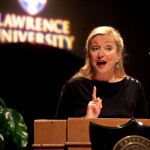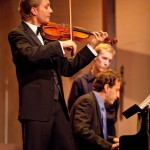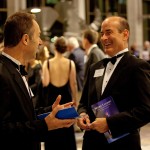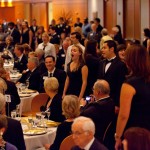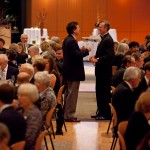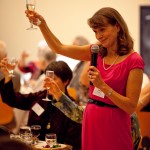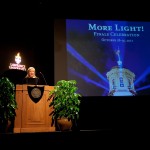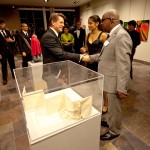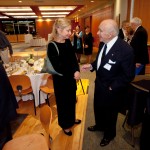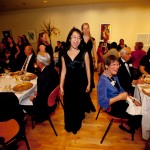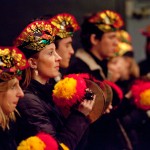Tag: More Light!
A Message From More Light! Leadership
 Dear Alumni and Friends of Lawrence,
Dear Alumni and Friends of Lawrence,
The More Light! campaign has moved Lawrence forward in both tangible and intangible ways. It is difficult for today’s Lawrence student to recall a campus before the Warch Campus Center, an expanded Björklunden lodge, Riverwalk and Hurvis Crossing. More Light! gifts to our endowment have bolstered the university’s ability to provide necessary scholarships to the more than 90 percent of our students who are dependent on some level of financial assistance. Endowment gifts have created professorships in the sciences and conservatory, increased the total number of faculty at Lawrence and the competitiveness of their salaries. Gifts to the Lawrence Fund have supported new initiatives such as the Lawrence Fellows in numerous disciplines and Posse Scholars, enhancing the fabric of our community and broadening the learning opportunities offered at our university. Awards from private family foundations have enabled Lawrence to strengthen its curriculum, building Senior Experience campus-wide; focused Dance Studies; and Cinema, Media and Cultural Studies in the Humanities.
There can be no question that the unwavering generosity and determination of our alumni, friends and supporters have transformed this institution. The More Light! campaign will have an enduring legacy that will positively impact the educations of countless Lawrentians far beyond our lifetimes. On behalf of the More Light! campaign steering committee and the Lawrence community, thank you for your support of the campaign and the college.
Jill Beck
President
Bill Hochkammer ’66
More Light! Co-Chair
Harry Jansen Kraemer, Jr. ’77
More Light! Co-Chair
More Light! Lawrence Collects
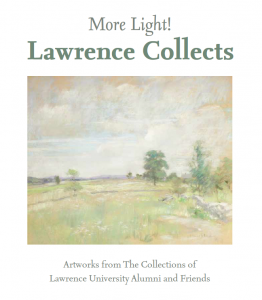 David Hockney. Rembrandt van Rijn. James McNeill Whistler. These are just a few of the renowned artists with whom Lawrence students have the opportunity to become acquainted through courses in art history. Now, thanks to alumni and friends of Lawrence, students can view and reflect upon works by these and other great artists firsthand in the Wriston Art Center galleries as part of the exhibition More Light! Lawrence Collects.
David Hockney. Rembrandt van Rijn. James McNeill Whistler. These are just a few of the renowned artists with whom Lawrence students have the opportunity to become acquainted through courses in art history. Now, thanks to alumni and friends of Lawrence, students can view and reflect upon works by these and other great artists firsthand in the Wriston Art Center galleries as part of the exhibition More Light! Lawrence Collects.
More Light! Lawrence Collects celebrates the conclusion of Lawrence University’s More Light! campaign. The exhibition offers a sample of the art collected (and in a few cases created) by members of the Lawrence community. Their generosity allowed the valuable works from their private collections to travel from near and far to be shared with students, faculty, staff and community members. A special thank you to George Chandler ’51, who permanently gifted a work of art to the college as part of More Light! Lawrence Collects, allowing future generations of Lawrentians to study and enjoy it.
“Light! More Light!” is a fitting motto for a college whose mission is to enlighten its students through a liberal arts education. Exhibitions such as More Light! Lawrence Collects bring the light of additional ideas, techniques and ways of perceiving the world to our campus.
View photos of some of the exhibition works.
This exhibition is currently open to the public and will continue through November 23, 2011.
Bart De Stasio named Singleton Professor in the Biological Sciences
Bart De Stasio, a Lawrence University alumnus and esteemed member of the Biology Department faculty, was recently named the first holder of the Singleton Professorship in the Biological Sciences, the college’s newest endowed professorship. Supported by a $1.5 million gift to the More Light! campaign from Charlot and Dennis Singleton of Atherton, Calif., endowed professorships enable Lawrence to attract and retain faculty who are leaders in their academic fields. And, in the selection of De Stasio for this distinction, the Northeast Wisconsin community also benefits.
*****
Tracking the Invaders: Lawrence University Scientist Monitors Non-native Species in Fox River
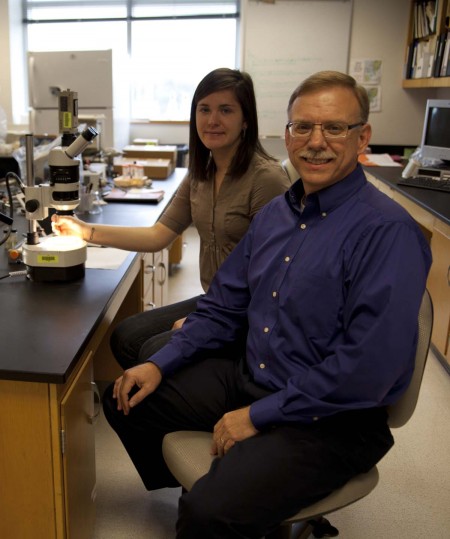
Lawrence University biologist Bart De Stasio is on the hunt. Not for trophy bucks or record-size fish. His targeted prey is invasive species —nickel-sized zebra mussels and six-inch round gobies.
As for his preferred weapon of choice: think giant hot tub.
A specialist in aquatic biology and predator-prey interactions, De Stasio, in collaboration with Lawrence students, is conducting an on-going study of the Fox River, looking for non-native and potentially damaging species that might be making their way up the river from the bay of Green Bay to the upland lakes, including Lake Winnebago.
Working closely with professors outside the classroom on projects such as De Stasio’s invasive species research is regarded by many students as the most enriching experience of their Lawrence education. One of 15 Lawrence students to date who has assisted on the invasive species study, Adam Breseman spent the summer in De Stasio’s lab analyzing water samples, searching for anything from Chinese mystery snails to another invasive fish, the Eurasian Ruffe.
“It was a very intellectually stimulating experience,” said Breseman, a biology major from Baileys Harbor. “Coming into this, I knew very little about zooplankton and benthic invertebrates, but I learned a tremendous amount about those organisms as well as the Fox River watershed system. I’m only a sophomore, so I appreciated the opportunity to work on an internship like this.”
As the process of restoring and reopening the entire 17-lock navigational system between Lake Winnebago and Green Bay moves toward an anticipated 2015 conclusion, De Stasio’s research will be critical in determining whether a proposed boat transfer station at the Rapide Croche lock near Wrightstown is successfully keeping invasive species out of the upper river system.
Started in 2005, De Stasio’s study is collecting data on both species and populations, and is expected to continue for five years after the boatlift becomes operational.
“Right now we’re trying to identify everything, including all of the invertebrates, living at six different locations — three above and three below the site of the proposed boatlift at Rapide Croche lock — and determine whether it is a native or non-native species,” explained De Stasio. “The possibility of transporting something above that lock is a real concern. It would be easy for a zebra mussel attached to a boat’s hull or a spiny water flea on a fishing line to get moved past the barrier.”
Junior Amanda Dwyer from Ralston, Neb., spent 10 weeks this summer dip-netting, beach-seining and working with an Ekman grab on the Fox River, collecting samples for the study.
“It was an awesome experience going out into the field and coming back to the lab to identify what we collected,” said Dwyer, a biology and environmental studies major. “I became more comfortable with the different sampling methods we were taught in class and I learned the distinguishing characteristics of invasive species versus native species we collected. It was great being able to work with Prof. De Stasio on such an extensive and relevant project.”
To limit the possibilities of upstream spread of exotics and in conjunction with his invasive species study, De Stasio has investigated the use of a hot-water treatment to clean boats — and kill any undesirable hitchhikers — before they pass the Rapide Croche lock. Working with a student, Jessica Beyer, De Stasio has determined that for the most probable invasive species, a five-minute minimum immersion in a tank of 110-degree water would essentially kill any of the invasive species they’ve identified.
“Basically, any boat moving up the river would get dunked in a giant hot water tub that could accommodate boats as large as 53-feet in length,” said De Stasio. “Other parts of the boat, the livewell, bilge and motor, would be hosed down with the hot water as well. This is ecologically preferable to a chemical scrub because you don’t have to deal with any potentially toxic waste issues.”
While the hot-water dunk treatment is expected to prevent invasive species from breaching the Rapid Croche lock, it can’t completely eliminate the possibility of non-native species penetrating the upper river.
Boats taken out of Green Bay or the Fox River below the Rapid Croche lock and relaunched upstream can wind up introducing invasive species beyond the barrier. Educating boaters of this danger will be critical to the success of limiting the number of unwanted species.
“An education program created by Phil Moy from the UW Sea Grant Program is designed to raise boaters’ awareness about the importance of not transporting their boats from one body of water to another without a significant waiting period to allow the boat to completely dry,” said De Stasio. “Five days is the recommended wait time but longer than that would be even better. It’s going to take a concerted effort by all users to keep the Fox River and other upland bodies of water from being invaded with non-native species. While no plan is fail safe, it’s easier to keep them out than it is to control them once they establish themselves.”
